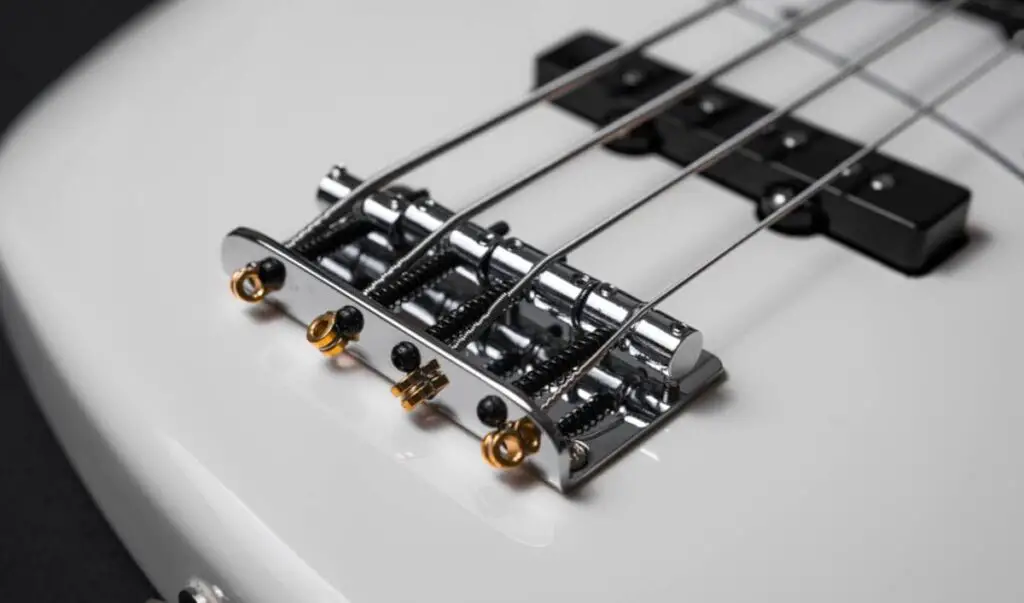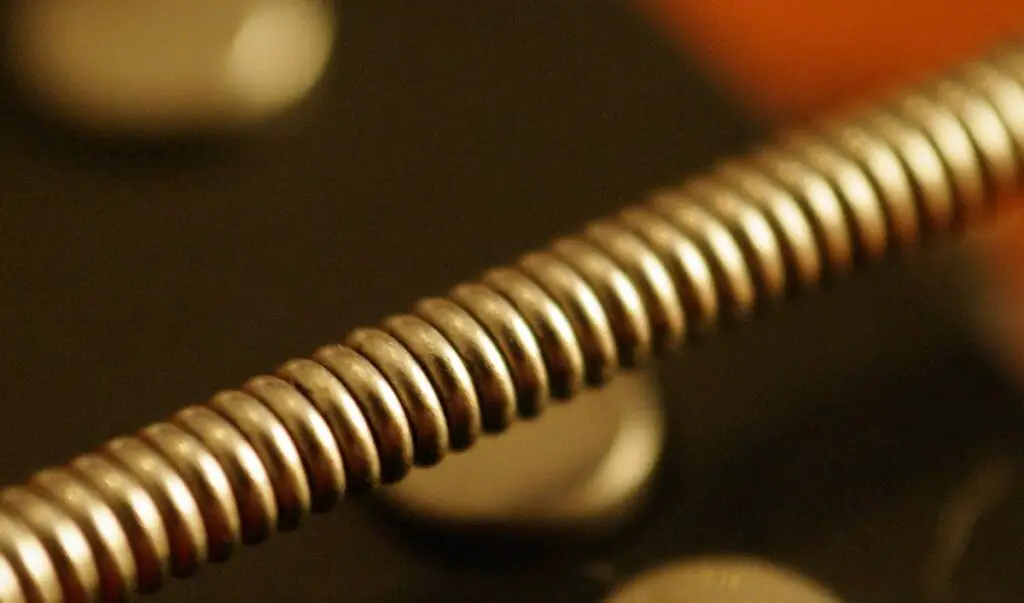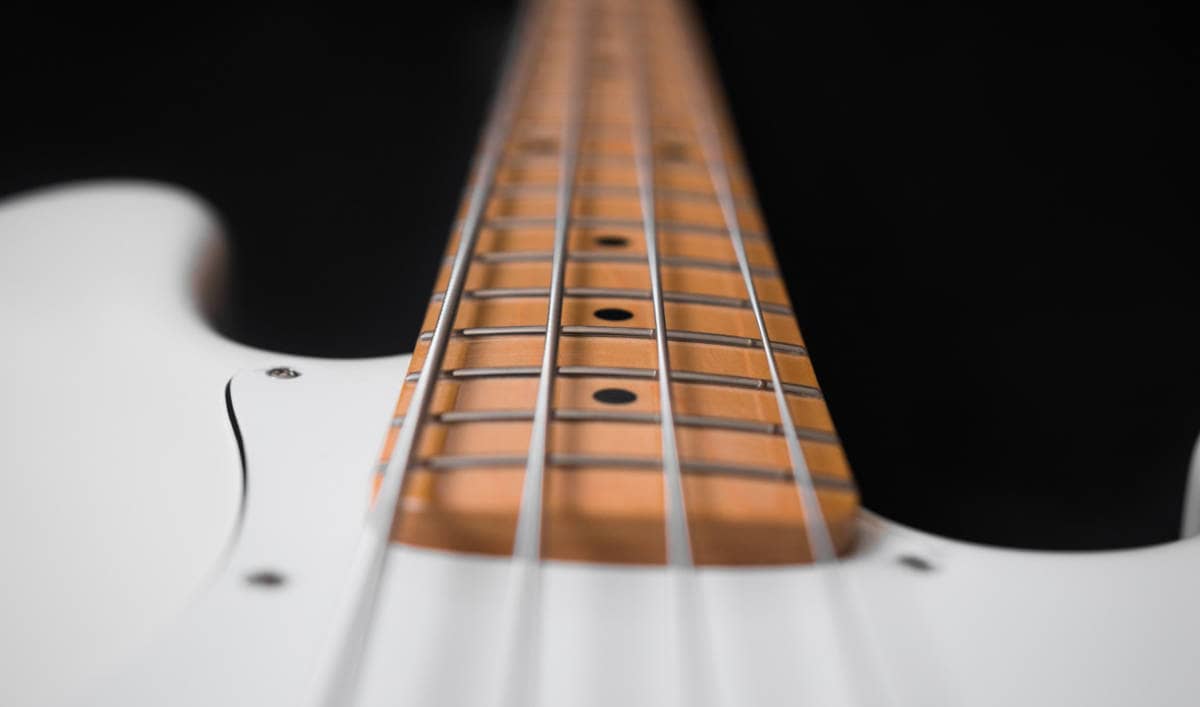If there is one thing we bassists obsess over, it’s perfecting our tone. Amp settings and string thickness are therefore common topics. However, an often overlooked area that is defining for both the tone and playability of our basses is the action. Many bassists believe it should be as low as possible, while some claim that higher action produces a more resonant tone. But first of all, what does low action mean for a bass?
Action refers to how big the space between your strings and your frets is. If the distance from the top of your frets to the bottom of your strings is short you have low action on your bass. As a general rule, low action is between 1/16th” and 9/64″, or 1.6mm to 3.5mm.
I have heard some mistake action for string tightness, but this is not the same thing. Action is simply how high the strings are raised relative to your frets and refers to the distance between them.
Action is a topic where bassists tend to disagree a lot. Thus, I am going to give you the unbiased truth about what low action is. This way, you will be able to determine for yourself what type of action is best suited for your playstyle and tone.
How do I know if my bass action is too low?
The action on a bass guitar is too low when you start hearing perpetual fret buzz. Furthermore, when the action is too low it is difficult to have any dynamic in your playing and your strings are unable to sustain notes for long.
Before you start thinking about measuring how low your action is, you should focus on what playing your bass feels like.
If there is fret buzz and static, the action is too low and you should adjust it higher.
Low sustain or monotone dynamics could be fixed by adjusting the action higher. However, these are not necessarily issues and some bassists prefer having their bass set up this way.
As for the numbers, what constitutes low action is closely linked to the quality of your bass. In general, it is easier to obtain lower action on higher-end options. This means that low action is going to mean vastly different things on a $400 and a $4000 bass.
Related reading: Do expensive basses sound better?
The table below is a rough estimate of how low you can adjust the action on basses of different qualities. It is based on my own experience and me asking knowledgable bassists in various genres about their opinions:
| Bass | Description | Action in Inches (12th fret) | Action in Millimeter (12th fret) |
| Poor Entry-level bass | Bought second-hand or cheapest option available when bought new. | 1/8″ – 11/64″+ | 3.2mm – 4,4mm+ |
| Quality entry-level bass | Cheap quality bass from a reputable brand, roughly in the ~$400 range when bought new. | 7/64″ – 5/32″ | 2.8mm – 4mm |
| Intermediate bass | Great mid-level bass in the $600 to $1000 range | 3/32″ – 9/64″ | 2.3mm – 3.5mm |
| Professional high-quality bass | High-end instruments generally used by advanced bassists. These Basses cost around $1000 and up. | 1/16″ – 1/8″ | 1.6mm – 3.2mm |
When it comes to action and bass quality, you also need to be aware that poorer instruments will generally need to be adjusted more often. If you are looking to get as low action as possible on a cheaper bass guitar, this will thus usually impact the lifespan of the instrument.
Is Lower action better?
While lower action is not strictly better than higher action, many bass players seek to have their action as low as possible. This is because lower action generally makes the bass easier to play. Thus, bassists who are looking to play as fast as possible tend to prefer low action.
Everyone knows lower action makes it easier to play faster. However, what many bassists are not aware of is how much impact the action has on the sound of their instrument.
Depending on the bass, a lot of sustain is lost when the action is set as low as possible. The difference between playing soft or hard also becomes diminished.
For some bassists, this is not a big deal, and they might even prefer the clankier sound that low action produces. For others, the lack of dynamic playability and sustain would completely ruin their style. Furthermore, for bassists with smaller hands lower action can be desirable as high can make it harder to reach and push down the strings the way you want.
Rock and metal bassists such as Geddy Lee, Steve Harris, and John Entwistle all have fast playstyles and aggressive sounds that cut through the mix. Thus, they all preferred lower action, both in order to play their complex basslines, but also to produce a sound that was fitting for their genre.

Does higher Action give a better bass tone?
As a general rule, a bass with higher action will have a more resonant and open tone than one with lower action. Higher action typically makes strings ring for longer which makes sustained notes sound fuller. It is also easier to produce more dynamic sounds when the action on your bass is high.
While there is no such thing as “better tone”, I have heard many bassists think of increasing action as trading playability for tone.
In my experience, this is heavily dependent on what genre of music you are looking to play. Yes, higher action will give a more resonant sound. However, if I`m looking to cut through and add drive to two distorted guitars I would much rather have a sound that is aggressive, percussive, and metallic.
Sometimes, a higher action will also turn fast basslines unplayable, and a preferable tone is of no use if you cant play your basslines. High action might also make it more difficult to play, or even get a preferable tone when slapping the bass with your thumb.
Related reading: Can all bass guitars be slapped?
For softer or more groovy genres where a bass with a fuller sound has space to shine, I find higher action to be a perfect fit.
Thus, as long as the genre isn’t too heavy, and the basslines aren’t so fast that I`m pushing my limits, higher action does produce a more preferable tone.

Will lighter strings lower action?
How lighter strings will affect your bass depends on the state of your bass’s neck. It’s possible that lighter strings will allow your neck to lose relief, which leads to higher action. If your neck ends up not losing relief at all, switching to lighter strings will very slightly increase action.
In theory, your strings have very little impact on the action of your bass. The only difference is that thicker strings will marginally lower action just in virtue of being bigger and thus closer to the frets. Bigger strings also need less room because they don’t move as much as smaller strings, meaning you could place them closer to the frets.
In practice though, switching strings impacts many aspects of your bass guitar and this could affect the action in different ways.
After switching to lighter strings and tuning your bass, you should always let it rest for 24 hours to see how it responds. It is perfectly possible for the action to remain unchanged, increase, or decrease.
You can adjust the truss rod on your bass after you have let the bass adjust to the string change, and thus lower the action if needed. Whether you can adjust it lower than with your thicker strings without the frets buzzing is dependent on how your neck adjusted to the change of strings.
Conclusion
I try my hardest to avoid saying “it depends” as an answer, but when it comes to action on bass guitars, it really does.
The quality of your instrument, your strings, the sound you are after, your hand size, the neck on your bass, and your playstyle all influence where and how you should set your action. Thus, you should use the above information as guidelines rather than absolute rules.
With that said, there are two main points that you should take away from this article:
First, you should disregard the number of inches or millimeters when setting your action. Whether your bass has “low” or “good” action is dependent on how you can make your ax sound and how much playability was sacrificed in doing so.
Second, higher tension generally means better resonance and sustain, and thus many musicians call this “better tone”. This is genre dependent and sacrifices playability. Thus, make sure that higher action produces a tone that is fitting for your style of music before blindly adjusting it.
Lowering your action is one of many ways to make your bass tone sound cleaner. To learn more about how to clean up your tone, continue by reading this article: 6 Helpful Tips For Getting A Cleaner Bass Tone

